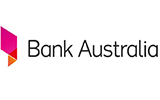What’s happening with fixed rates in December 2025?
Dozens of lenders have lifted their fixed rates in recent weeks, with inflation remaining sticky and sitting above the RBA’s target band — a sign the cash rate may stay higher for longer, and could even rise again in 2026.
However, there are still a few short-term fixed rates in the 4% range. Fixing your rate now means you’ll be protected from any potential rate hikes, but you won’t benefit from future cuts. Whether a fixed rate is right for you ultimately depends on your individual goals and circumstances.
Money.com.au analysis shows new fixed rates for terms under three years have dropped by 0.70% for owner occupiers and 0.81% for investors.
What is a fixed rate home loan?
A fixed home loan has an interest rate that is fixed for a period — typically between one and five years. This means your repayments won’t change during the fixed rate period, protecting you from rate rises. On the other hand, it means you won’t benefit from lower repayments when rates drop during the fixed period.
While a fixed rate home loan may make budgeting easier by providing repayment certainty, you may not be able to make extra repayments, or there may be caps on additional repayments per year (e.g. maximum of $20,000 annually).
You may also not have access to features like an offset account or redraw facility. Fixed rates are available on owner-occupier and investment home loans.
What happens at the end of your fixed home loan term?
When your fixed-rate period ends, your interest rate and repayments will likely change. It’s important to carefully consider what you should do next. Here are the three main options you’ll have:
Roll onto your lender’s variable rate
If you don’t take any action, your mortgage will typically revert to your lender’s standard variable rate. This means your repayments may increase (or decrease) depending on the current market rate. It’s important to check what that new rate will be.
Re-fix or refinance your loan
You can choose to lock in another fixed rate, either with your current lender or by refinancing with a new one. This can give you repayment certainty for another term and potentially a better deal – especially if rates are expected to rise.
Switch to a different loan structure
Instead of fixing again, you might switch to a variable rate loan, which can offer more flexibility and useful features. You could also consider a split loan, where part is fixed and part is variable, giving you a mix of stability and flexibility. These options are available with your current lender or by switching to a new one.
What are the current fixed mortgage rates?
Lowest fixed home loan rate
Based on our database, the lowest fixed interest rate is 4.64% p.a. (comparison rate 5.53% p.a.) on Australian Mutual Bank's First Home 2-Year Fixed Loan available to owner occupiers buying their first home. The maximum loan-to-value ratio (LVR) is 95%.
Average fixed home loan rate
Based on the RBA’s Housing Lending Rates, the average 1-3-year fixed home loan rate is 5.20% p.a. The average 4-5-year fixed home loan rate is 6.31% p.a. for new owner occupier loans.
More fixed rates
1-year fixed home loan rates
| Loan | Interest rate | Comparison rate^ | Max LVR |
|---|---|---|---|
| Pacific Mortgage Group Fixed Home Loan | 4.84% | 5.11% | 80% |
| Horizon Bank Fixed Rate Home Loan | 4.94% | 5.74% | 70% |
| Up Home Up Home Fixed Term | 4.95% | 5.18% | 80% |
| Hume Bank myBlue Fixed | 4.99% | 5.31% | 60% |
| Border Bank Customs Value - Up to $4k Cashback | 4.99% | 5.33% | 60% |
2-year fixed home loan rates
| Loan | Interest rate | Comparison rate^ | Max LVR |
|---|---|---|---|
| Pacific Mortgage Group Fixed Home Loan | 4.74% | 5.07% | 80% |
| Australian Mutual Bank Fixed Rate Home Loan Owner Occupied | 4.74% | 5.58% | 95% |
| Border Bank Customs Value - Up to $4k Cashback | 4.79% | 5.27% | 60% |
| Border Bank Customs Value - Up to $4k Cashback | 4.79% | 5.31% | 90% |
| Illawarra Credit Union Boost Package Home Loan Fixed | 4.79% | 5.62% | 80% |
3-year fixed home loan rates
| Loan | Interest rate | Comparison rate^ | Max LVR |
|---|---|---|---|
| Australian Mutual Bank Fixed Rate Home Loan Owner Occupied | 4.74% | 5.50% | 95% |
| Bank Australia Clean Energy Fixed Home Loan 7.5 Star + | 4.79% | 5.41% | 90% |
| Pacific Mortgage Group Fixed Home Loan | 4.84% | 5.06% | 80% |
| Horizon Bank Fixed Rate Home Loan | 4.84% | 5.58% | 70% |
| G&C Mutual Bank Fixed Rate Home Loan – Owner Occupied | 4.85% | 4.93% | 95% |
4-year fixed home loan rates
| Loan | Interest rate | Comparison rate^ | Max LVR |
|---|---|---|---|
| Hume Bank myBlue Fixed | 5.29% | 5.32% | 60% |
| Macquarie Basic Home Loan Fixed P&I | 5.29% | 5.35% | 70% |
| Bank of Queensland Fixed Home Loan Special - $2k Cashback | 5.29% | 5.48% | 80% |
| Macquarie Offset Package Fixed | 5.29% | 5.58% | 70% |
| Greater Bank Ultimate Home Loan - Up to $3k Cashback | 5.29% | 6.67% | 95% |
5-year fixed home loan rates
| Loan | Interest rate | Comparison rate^ | Max LVR |
|---|---|---|---|
| Australian Mutual Bank Fixed Rate Home Loan Owner Occupied | 5.19% | 5.55% | 95% |
| Move Bank Everyday Fixed Home Loan | 5.29% | 5.31% | 95% |
| Bank of Queensland Fixed Home Loan Special - $2k Cashback | 5.29% | 5.48% | 80% |
| Greater Bank Ultimate Home Loan - Up to $3k Cashback | 5.29% | 6.56% | 95% |
| ING Fixed Rate Loan with Orange Advantage | 5.34% | 5.40% | 70% |
The best fixed home loan rates will vary depending on the type of home loan you need (e.g. owner-occupier home loans tend to have lower rates than investor home loans) and your LVR. Lenders consider LVRs below 80% less risky because you’re borrowing a smaller amount relative to the property's value. Lower LVRs usually come with lower interest rates, while higher LVRs typically result in higher rates.
How long should you fix your home loan rate for?
According to the RBA, most borrowers in Australia who fix their mortgage interest rate do it for three years or less. However, how long you should fix your rate will depend on your financial circumstances. If you’re unsure about your options, it’s best to speak to a mortgage broker before locking yourself into a fixed rate.
At a high level:
- A 1–2 year fixed term offers short-term certainty for borrowers who want stability now but don’t want to be locked in long-term. It also gives flexibility to reassess your loan when the term ends – ideal if you think rates may fall in the near future.
- A 3–5 year fixed term might be better suited to risk-averse borrowers who want long-term repayment certainty and protection from potential rate hikes. But with the current talk of a rate-cut cycle beginning, you might end up stuck on a higher rate than the market average.
Ultimately, there’s no one-size-fits-all answer. It’s all about balancing peace of mind with potential savings – and making sure your loan structure supports your overall financial goals.
Short vs long fixed terms: What to consider

Mansour Soltani, Money.com.au's Home Loans Expert
“Generally, you’ll get a lower interest rate if you fix your loan for two or three years compared to five years. That’s because lenders charge a premium for the certainty provided by longer fixed terms. Fixing your loan for a longer duration exposes the lender to more uncertainty regarding future interest rate movements. On the other hand, some lenders may charge lower interest rates on longer fixed term home loans because they’ll make their money in break fees if you refinance during the fixed term.”
Mansour Soltani, Money.com.au's Home Loans Expert
Are fixed rates cheaper than variable rates?
Based on Money’s analysis of various lenders (including Australia’s big four banks), home loans with fixed rates are currently marginally more competitive than most home loans with a variable rate.
According to Mansour, this suggests lenders are expecting the RBA to make further cash rate cuts in 2025, following a 0.25% cut in February.
“Lenders update their fixed rates regularly based on economists' predictions around cash rate changes. They need to ensure their fixed rates are indicative of the current interest rate environment. If the cash rate was expected to go up, lenders may charge borrowers a higher rate for fixing their loan to compensate for potential losses in the future. However, we’re seeing the reverse (fixed rates coming down), which means lenders are expecting more rate cuts," he says.
Fixed rate home loan pros & cons
Pros
- Your repayments remain the same — you’re protected if there are sudden rate hikes during the fixed period
- A fixed interest rate makes it easier to calculate your borrowing costs (during the fixed period)
- You can choose short or long-term fixed terms to suit your financial situation or goals
Cons
- You won’t benefit from lower repayments if there are rate cuts during the fixed period
- Fixed rate home loans have fewer features available (e.g. you may not be able to make extra repayments or redraw)
- You may pay hefty break costs if you refinance or pay off your fixed rate loan early
Fixed rate home loan features explained
Rate lock
Some lenders offer a rate lock option which allows you to ‘lock’ your fixed rate while your home loan application is being processed and the purchase of your home settles. This feature generally comes with a fee typically calculated as a percentage of your loan amount (ranging from 0.15% to 0.20%). Based on Money.com.au’s analysis, most lenders will allow you to lock your rate for up to 90 days.
Offset
An offset account is a transaction account linked to your home loan that offsets your loan balance so you pay less interest. Partial offset accounts (where only a percentage of your loan balance and interest is offset) are more common with fixed rate home loans than full offset accounts where every dollar goes towards offsetting your interest.
Additional repayments
You may be allowed to make additional repayments up to a specified limit. According to Money.com.au's analysis of various fixed rate loan products, some lenders may permit extra repayments of up to $10,000 or $20,000 annually.
Redraw facility
If offered by the lender, a redraw facility allows you to withdraw additional repayments you've made on your mortgage. However, in most cases, redraw is only available at the end of the fixed rate period (i.e. when you roll onto a variable rate).
Flexible repayments
Some fixed rate home loans allow you to choose your repayment frequency (e.g. weekly, fortnightly, or monthly). Additionally, you could opt for a fixed rate home loan with an interest-only repayment option for a period of time. This is a common option among property investors.
Split loan
You can split your home loan into fixed and variable portions. This can help you ‘hedge your bets’ and benefit from the certainty of fixed repayments for a portion of your loan and get the flexibility and features of a variable rate loan for the other portion. You can choose the proportions of your split, whether it's 50/50, 60/40, or 70/30.
When should you choose a fixed interest rate?
Here are three scenarios where choosing a fixed rate home loan could be suitable.
Rates are historically low or increasingly volatile, and you want to lock in your current rate
According to Mansour, borrowers tend to fix their home loans when interest rates are low because there's no guarantee that rates will remain at these levels in the future. By locking in a fixed rate, borrowers can secure favourable terms and protect themselves from potential rate increases in the future (at least during the fixed period).
You value the certainty of a fixed repayment amount more than getting the absolute lowest rate
Fixed rate home loans offer stability and predictability in your repayments over the fixed term. If you prefer to know your exact repayment amount each month and avoid fluctuations in your budget, a fixed rate loan can be an attractive option. For example, some borrowers with tight financial constraints (e.g. retirees, first-home buyers) may prefer the certainty of a fixed rate over the lowest available variable rate. In some cases, the fixed rate could also be the lowest rate.
You’re an investor looking to manage cash flow
Fixed rate mortgages offer predictability in monthly repayments, making it easier for investors to forecast cash flow and plan their finances, particularly if they have investment properties generating rental income. Investors with multiple rental properties may choose fixed rates to mitigate interest rate fluctuations impacting their portfolio.
How to compare fixed home loans
1. Focus on the interest rate (the comparison rate could be a red herring)
The comparison rate is designed to reflect the total annual cost of a mortgage — including interest and fees. But this calculation is based on a 25-year loan term, which will be long after your fixed rate term expires. The comparison rate will therefore be based partly on the fixed rate and the variable rate your loan would roll onto by default at the end of the fixed term. That rollover rate is generally not the most competitive variable rate available. So, in the case of fixed rate home loans, the advertised interest rate may be more practical for comparing your options.
2. Consider which fixed loan term is appropriate for you
Compare different loan terms offered by lenders and consider whether you prefer a shorter-term fixed rate or the certainty of locking in your rate for a longer period. For example, borrowers who plan to sell their property or refinance within a few years may opt for a shorter fixed rate, while borrowers who can find a competitive rate on a longer fixed term may be happy to ‘set and forget’ for 4-5 years.
3. Check out the home loan fees
Over time, home loan fees can add up to around 1% of your initial loan amount, sometimes more. In addition to standard fees like application fees, monthly fees and annual package fees, some lenders may also charge a ‘rate lock’ fee. This fee applies if you want to lock in your fixed rate before your loan application is approved to avoid a rate hike. You’ll also pay break fees if you repay your fixed rate loan early or refinance.
4. Shop around for home loan features
Fixed rate home loans generally have fewer features than variable loans, but you may be able to find lenders that allow you to make extra repayments up to a limit. Some fixed rate home loans also come with a redraw facility or offset account.













